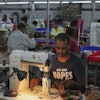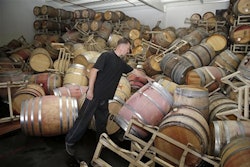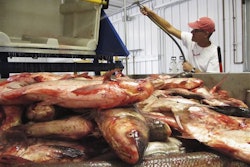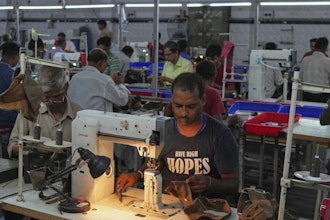
This article originally appeared in the September print issue of IMPO.
Do manufacturing jobs "belong" on-shore? Is off-shoring or outsourcing inherently bad? Both questions are based on an erroneous assumption that effective trade creates winners and losers. A job producing something in Vietnam does not equate to one fewer job here in the U.S. It does not have to be a zero sum game. My experience has shown that a properly executed strategy can and should create winners on both sides.
The question which should be asked is “where is the best place to manufacture?" I have two decades’ experience in international trade, helping American and European companies source components and manufactured products from a variety of nations all over the world, including Vietnam, China and India. The nearly universal result is that the company strategically sourcing or manufacturing off-shore to complement their domestic operations has become more competitive and used that posture to grow. This, in turn, fuels growth in R&D, sales and even domestic manufacturing, and at the end of the day means more U.S. jobs... not less.
So I propose we replace the notion of off-shoring vs. on-shoring with the idea of "right-shoring," asking the question "where is (are) the best location(s) to make something?" My business answers this question for our customers every day. To do so, criteria beyond simply cost must be considered.
For years, we heard the drumbeat in the media that low labor costs and an artificially devalued Chinese Yuan was the main driver for a move toward China for sourcing. However, even with a labor cost that has doubled in the past three years, and Chinese currency which has appreciated 30 percent in a half-dozen years, the U.S. trade deficit with China has continued to grow 20 percent plus over that same period. There is obviously far more going on in China than low labor costs and currency exchange rates.
Simply put, China has remained very strong in many other criteria important to selecting a manufacturing location such as: favorable corporate taxes, manufacturing capabilities, engineering talent pool and logistics infrastructure. China uses a tax policy to encourage manufacturing, promotes the importance of STEM education (science, technology, engineering and math) and thus graduates copious quantities of engineers each year, and wisely invests to improve its infrastructure of ports, airports and roadways.
Therefore China has climbed several links up the value chain, using its ever-improving manufacturing capabilities and quality to insulate itself at least partially from rising costs. No longer is it the place to make low-value goods at the lowest possible cost. Instead, it is now the manufacturing home of precision-machined components for industrial robots, complex electronics used in advanced surge protectors and engineered actuators used in high-end snow-throwers (all real-world examples of our U.S.-based customers).
Following Japan's trajectory of 30 years ago (at least from a quality and cost perspective — remember that Japan was once synonymous with "cheap"), China now competes and loses to countries like Vietnam or India when it comes to purely price. Vietnam in particular, eager to follow the Chinese economic growth model, has jumped on the lower links of the value chain and is steadily inching its way upward. Again pulling from the pool of our own customers as examples, products and components for markets like HVAC pumps, material handling/conveyor systems used in warehousing and distribution, high-efficiency motors used in refrigeration and even medical devices are all successfully produced in Vietnam.
Yet another factor is the availability of raw materials. Excellent, competitive stainless steel comes from India because India has the ores and minerals necessary to make it. While China has no bauxite and is thus not necessarily competitive to produce aluminum stock, Vietnam has become a major supplier of aluminum and rubber because it has those needed natural resources.
In today's flattened-world economy, the concept of made "here" or "there" makes no sense. Few end products are completely made in any one country. American cars contain wire harnesses put together in Mexico from wire made in Georgia, engine components machined in Eastern Europe, assembled into finished engines in Michigan, sheet metal produced in Pennsylvania and fasteners cold-headed in Taiwan.
The following are real-world case studies, either ongoing or in-development, in which East West plays a role helping customers “right-shore.” At first glance, the supply chains in these examples appear to be complex and intuitively inefficient. However, the power of incrementally adding value in a location best suited for each step ends in the lowest cost, highest-quality and most reliable result.
Automotive Headlamp Washing System
12v Motor sourced in China… shipped to Vietnam
Washer pump parts injection molded in Vietnam, assembled with motor into finished pump and tested… shipped to the UK (supply chain managed by U.S. company)
Headlamp washer nozzles, reservoir and controls produced in the UK and combined with pump into complete system and tested… shipped to Germany
Headlamp washer system assembled into automobile… automobile sold and shipped around the world
High-Efficiency Refrigerated Display Case
Magnets sourced in China… shipped to Vietnam
High-efficiency motor (designed in New Zealand) parts produced in Vietnam and combined with magnets into finished motor and tested… shipped to Europe, Asia and the Americas (supply chain managed by New Zealand and U.S. companies)
Electronic components sourced in China… shipped to Vietnam
Electronic components manufactured into PCBA and refrigeration control module in Vietnam (designed in New Zealand)… shipped to Europe, Asia and the Americas
Refrigerated display case components produced in Europe, Asia and the Americas, combined with high-efficiency motor, control module and other components sourced around the world (compressor, copper and aluminum coils, etc.) into finished display case… display case sold and shipped around the world.
In a world of Lean, automated manufacturing where global business is the norm and not the exception, the need to source and make things in the right place has never been more important. Rather than quibble over off-shoring vs. on-shoring, the real opportunity is to focus on right-shoring — adding value where it is the most optimum to do so. If the focus is on this aspect of competitiveness, then “Made in…” almost loses its meaning, replaced rightly so by “Designed in…”, “Assembled in…”, “Marketed in….” and “Distributed in…”
Right-shoring is simply adding value in the place most beneficial to do so. Properly executed, this powerful tool leads to greater competitiveness in an ever-changing global landscape. Competitiveness leads to a stronger company and growth. Growth means a strong domestic economy and ultimately more jobs. Isn’t that what we are all trying to accomplish?
Jeff Sweeney is Co-Founder and Executive VP of East West Manufacturing, an Atlanta-based Global Contract Manufacturing Company.
Read Next























